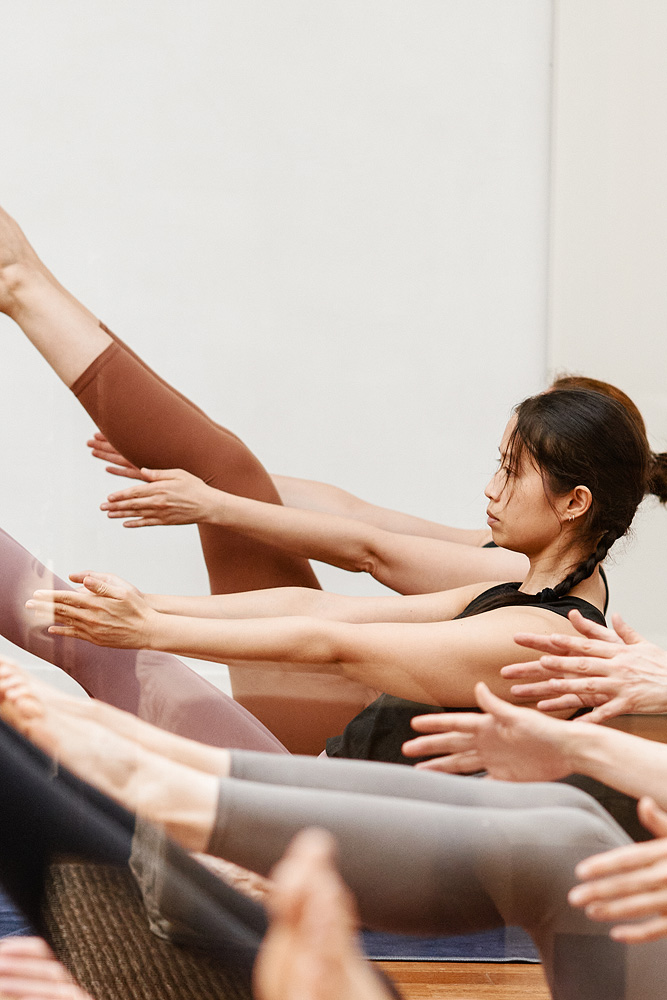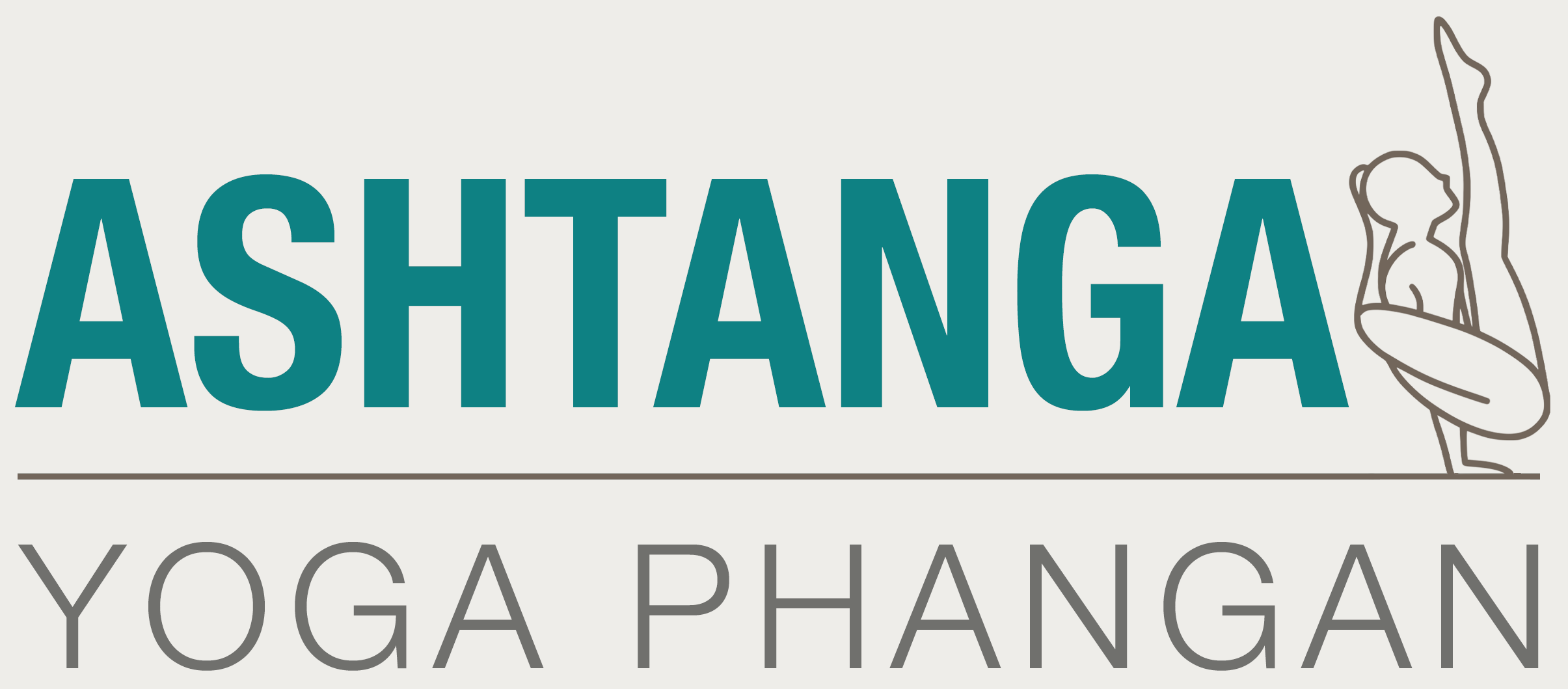
Historically, the led guided class Ashtanga was only given during Pattabhi Jois trips abroad, partly because of the large number of students but also to precisely reaffirm the method. Teaching is supposed to be respected in an almost autocratic way, that is to say that the teacher’s knowledge is authoritative: the teacher gives oral instructions, the students execute. Repetition is a key element of integrating the method.
In a Led/guided class, the teacher sets the pace of the practice by stating aloud the vinyasa count, the name of each posture and the breathing phases. Everyone practices at the same time and at the same pace. Even if the count is essential, the teacher can also give indications of postural alignments and the drishtis associated with the postures.
Often in Ashtanga yoga, the teacher leads only by verbal cues without physical demonstration. So it often happens that students ask, “Why don’t you ever show the postures like you do in other yoga classes? « . The explanation for this is ultimately quite simple. A purely verbal indication allows the student to move from a visual reflection very often turned towards the outside world and the mind to a more interior and intuitive listening. The student can then seek his own sensations and this avoids identifying himself or comparing himself to an external image.
In addition, the teachers most of the time have long years of practice. By showing more or less impressive postures, this could feed their own ego and discourage some students. The teacher’s role is to open up everyone’s abilities, to support their students with kindness and in no way to cultivate their own image because in the end… they also have their own way to go.

